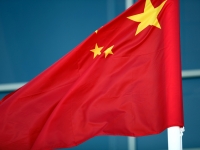Miscellaneous
Blasts in China`s Xinjiang kill at least 50, injure dozens
USPA News -
At least 50 people were killed and dozens more were injured in a coordinated attack in China`s western region of Xinjiang, the regional government disclosed on Thursday, four days after the attack happened. Most of those killed were said to be suspects.
The attack happened at around 5 p.m. local time on Sunday when explosions occurred at a number of locations in Bayingolin Mongolian Autonomous Prefecture, which is part of Xinjiang. The blasts targeted the entrance to a shop in Luntai County, a police station in Terakbazar, and a farmers` market in Yangxia, among other unspecified locations. A brief report on a government-run regional news portal disclosed on Thursday that at least 6 civilians had been killed while 54 others were injured, including three people who were seriously injured. Also killed in the attack were two police officers and two auxiliary police officers. The report said that 40 others described as "rioters" were killed when they either blew themselves up or were shot dead by police, but no specific details were released. Two suspects were arrested after police responded to the incident, which the regional government described as a "well-organized and serious case of violent terrorist attacks." Police identified Mamat Tursun, who was shot dead by police, as the main suspect, saying he had gradually developed a more extreme ideology after finishing secondary school in 2003. His "extremist religious ideology" became more intense from 2008, after which he refused to eat anything that was not Halal and even refused to attend his father`s funeral because he had worked as a civil servant. Mamat Tursun also refused to eat at home and declined to attend his brother`s wedding because the couple had received a marriage certificate from the government. He later started reaching out to other people while working in construction to get other people to form a group and carry out attacks, investigators said. It is the second time in less than two months that Chinese authorities have delayed important information about a major attack, seemingly in an attempt to avoid significant news coverage. It was revealed on August 3 that nearly 100 people were killed, including 37 civilians, in an attack in Xinjiang a week earlier. The report on state media was immediately followed by a second article that condemned the violence and justified the shoot-to-kill practice by police. The western region of Xinjiang has been the scene of bloody attacks over the past year. Security forces announced a year-long crackdown on Xinjiang terrorism in May after two SUVs plowed into a crowd of early morning shoppers at an open air market in Urumqi, the capital of the restive region. The attackers also tossed explosives at the crowds, killing 39 people and injuring nearly 100 others. An estimated eight million Uighurs are living in the Central Asian region of Xinjiang, which is officially known as China`s Xinjiang Uygur autonomous region. A large number of Uighur are reportedly unhappy about the large migrant Han Chinese settlers, accusing them of making their interests less important and generally disregarding their culture. Xinjiang was the scene of violent clashes between Uighur Muslims and Han Chinese in July 2009, leaving 197 people killed and more than 1,700 others injured. The riots were the region`s worst ethnic clashes in decades and the violence only stopped when a large number of troops were deployed to the remote western region. Following the 2009 riots, China cut all communications from the region to the rest of the world, including international phone calls, text messaging, and the Internet. Thousands of additional security forces have since been deployed and thousands of `riot-proof` closed-circuit television cameras have been set up in public places in an attempt to discourage any violence or unrest.
Liability for this article lies with the author, who also holds the copyright. Editorial content from USPA may be quoted on other websites as long as the quote comprises no more than 5% of the entire text, is marked as such and the source is named (via hyperlink).






